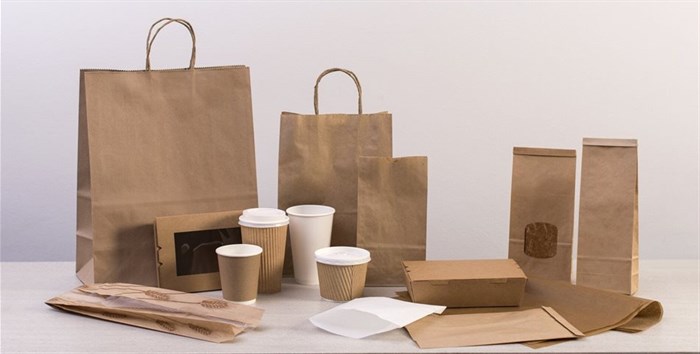The Paper Manufacturers Association of South Africa (Pamsa) enlisted South Africa as one of the 16 countries that participated in this year's global 'Trend Tracker Survey'.

Image supplied
The biennial consumer research study, driven by Two Sides, seeks to understand consumer perceptions towards print and paper products, looking specifically at environmental awareness, reading habits, and packaging preferences.
The shift to online shopping has accelerated dramatically in recent years. At the touch of a screen, consumers can search for a product, order and have it delivered to their door, on the same day.
“Consumers have come to appreciate the safety, speed and convenience of buying products online, however many are increasingly concerned about how their goods are packaged and delivered, and how easy it is to recycle materials used,” said Samantha Choles, communications manager for Pamsa.
The global survey questioned more than 10,000 consumers on their preferences and opinions regarding various packaging types, their attributes and their impact.
Some 58% prefer products ordered online to be delivered in paper packaging while 56% are actively taking steps to increase their use of paper packaging.
“Paper’s environmental credentials stack up especially in terms of recyclability and renewability. Of course, paper remains a versatile, beautiful material and adds to the tactile experience for the consumer,” noted Choles.
Packaging plays an important part in the purchasing decision from displaying vital product information to protecting its contents. Consumers were asked to rate various packaging materials – paper/cardboard, plastic, glass and metal – against 15 environmental, visual and physical attributes.
In 10 of the 15 attributes presented, paper/cardboard scored the highest among South African consumers: better for environment (55%), less expensive (56%), home compostable (65%), lighter weight (50%), safer to use (47%), easier to recycle (42%), easier to open/close (44%), better information about the product (39%), easier to store (32%) and more practical (36%).
A significant 77% of South African consumers said they would actively support retailers who offer a packaging return system while 60% would buy more from retailers who remove plastic from their packaging. Just more than half of consumers would consider avoiding a retailer that is not actively trying to reduce their use of non-recyclable packaging.
South African consumers are demanding that retailers do more to ensure their packaging is widely recyclable, and 42% believe that paper-based packaging is easier to recycle than other materials.
Recycling data reflects this belief to a certain extent: in South Africa, just less than 61% of paper and paper packaging (1.25 million tonnes) was recycled in 2022. Metal packaging has the highest recycling rate of 76%, while glass is 44% with the recovery of various plastics trailing at 43%.
A large proportion of consumers (80%) prefer products ordered online to be delivered in appropriately sized packaging to reduce waste, with 58% preferring paper packaging for online orders.
Consumers want government to do more about single use, non-recyclable packaging
Consumers were asked to rank who they believe has the most responsibility for reducing the use of non-recyclable single-use packaging:
- 36% believe that governments and local authorities carry most responsibility in this area.
- A quarter of the respondents feel that individuals should take responsibility through their personal choices.
- 18% believe packaging manufacturers, brands and producers should be the leaders.
- Only 4% felt that retailers and supermarkets carried the most responsibility.
More than 60% of respondents agreed that non-recyclable packaging should be discouraged through taxation. South Africa’s extended producer responsibility (EPR) regulations, gazetted in 2021, has seen a levy imposed on a variety of packaging materials. EPR seeks to drive more circular and sustainable supply chains by designing packaging for better recycling and thus reducing the volumes that go to landfill.
“South Africa has some good examples of brands leading the way, especially with packaging design and substitution, and ensuring local recyclability, while also being fit-for-purpose and safe for food contact,” says Choles.
Paper regains its place on the supermarket shelf
At Pamsa’s roundtable in July, Don MacFarlane, packaging senior at Woolworths, explained how paper and board are no longer just used for shipment or tertiary packaging. MacFarlane noted that trends show a move back to cartonboard or paper packaging from multilayer plastic flexibles for products like washing powder.
Along with the switch to paperboard punnets for fruit and vegetables, engineered paper is increasingly being used as primary packaging for dry goods, confectionery, and snacks, with an example being Nestlé Smarties.
Choles echoed, “For the circular economy to work, each of us has a role to play – starting with designing products or packaging for recycling or re-use, through to responsible disposal and separation-at-source by individuals in households, schools or offices. Closing the loop can be further enabled by retailers and businesses who implement convenient collection programmes or employ reverse logistics.”
Checkers’ Sixty60’s paper grocery bag return programme is a great example of this. The first to use paper bags for online delivery, Sixty60 also enables customers to send their used bags back with the driver.
































